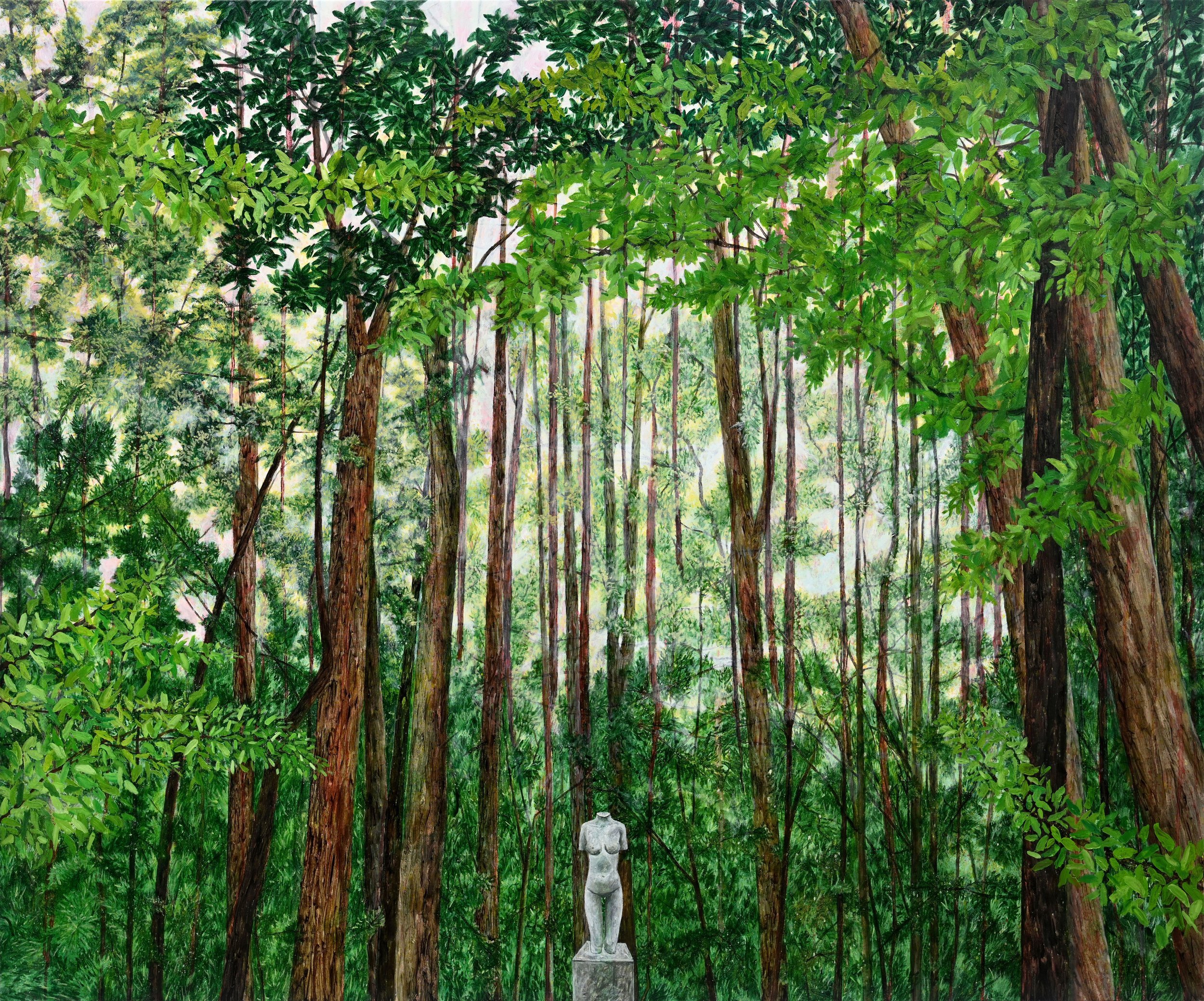
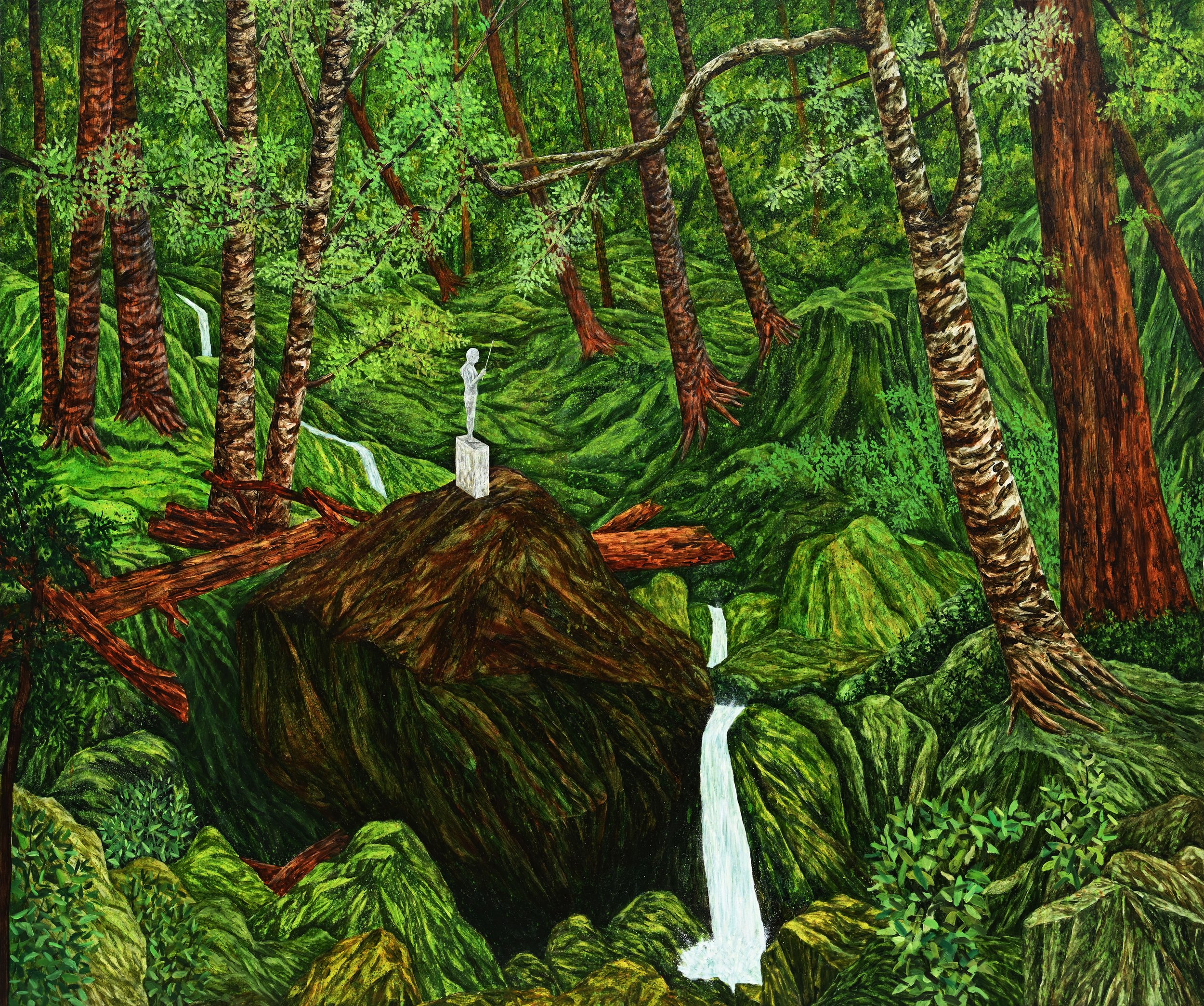
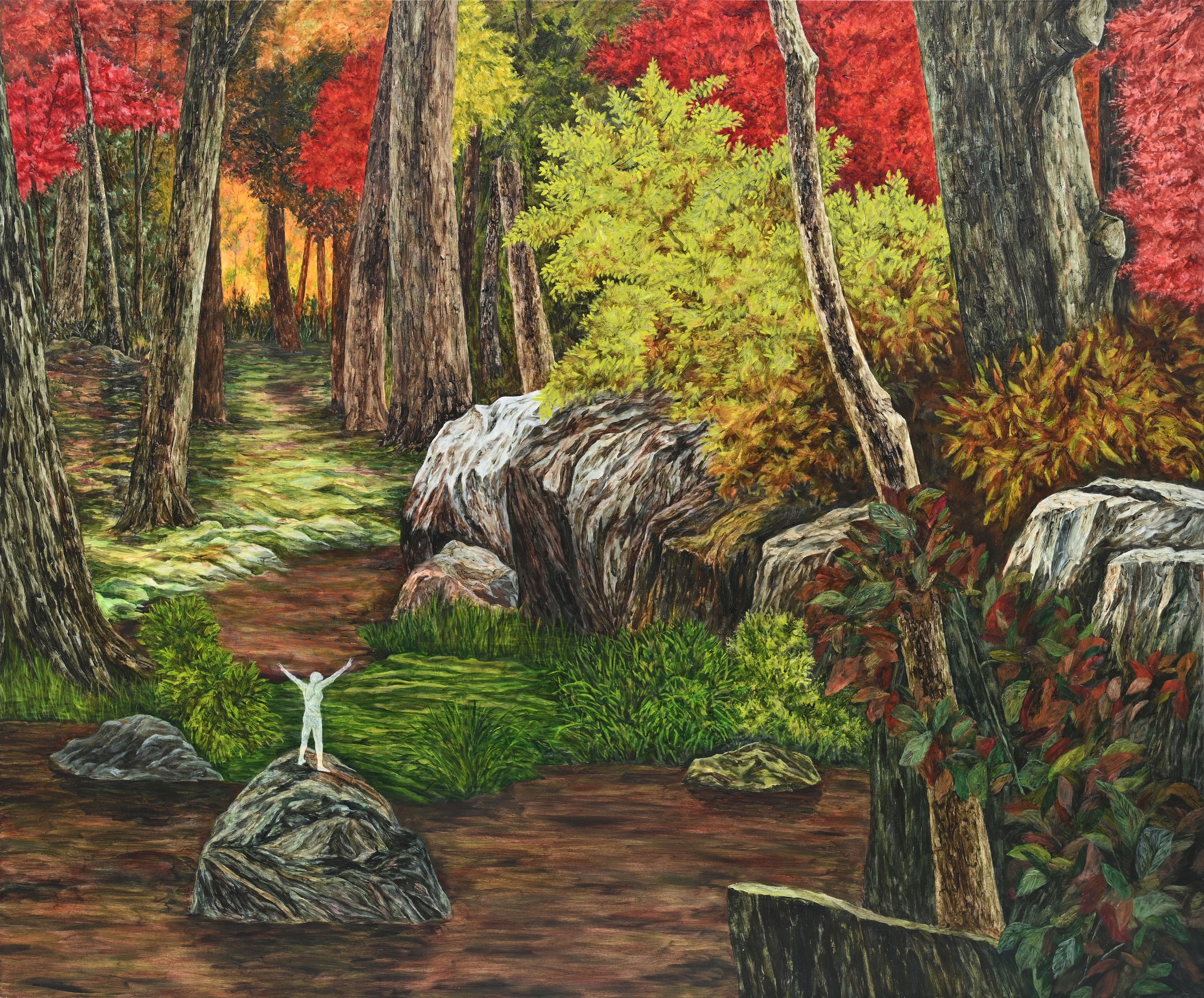
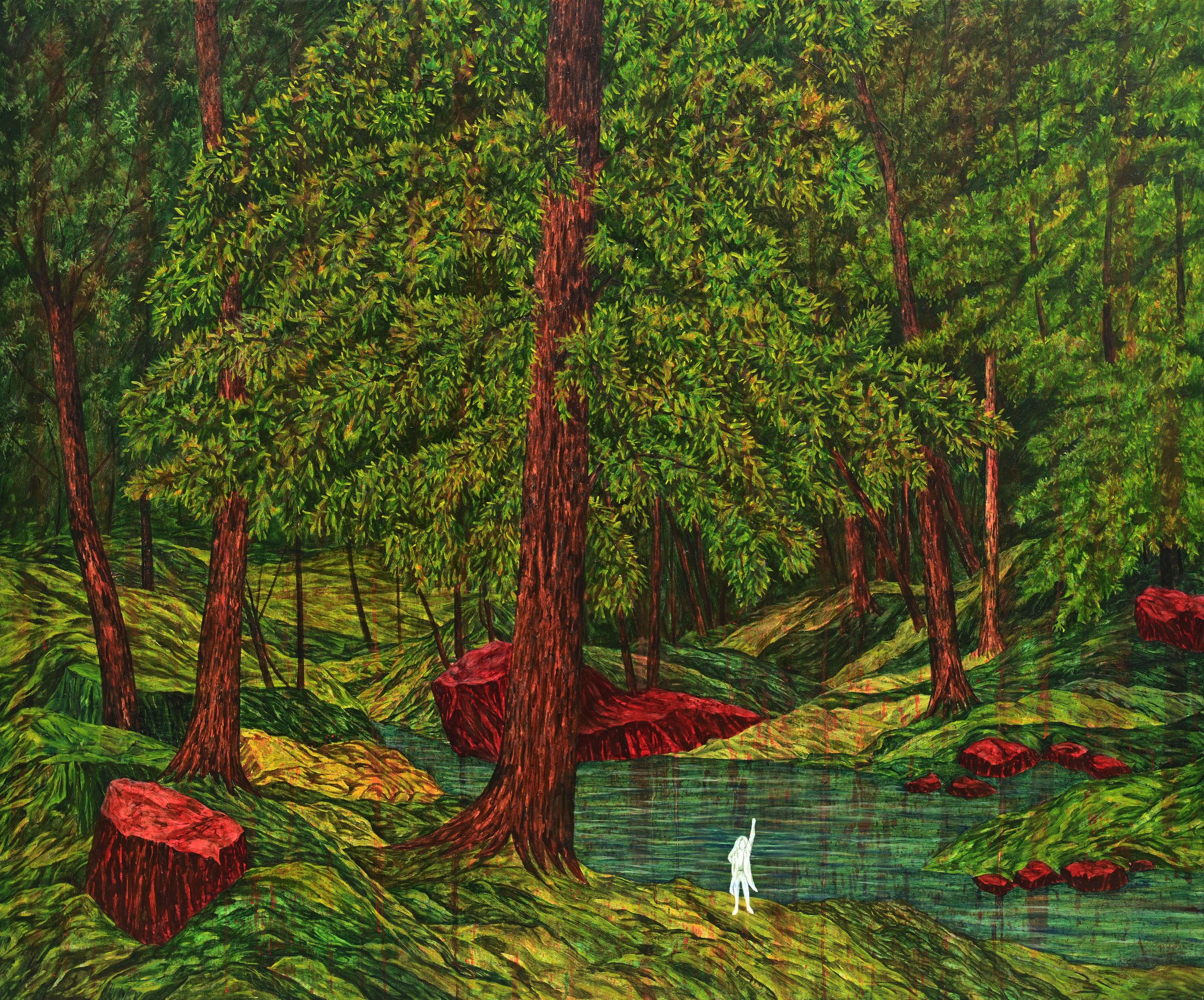
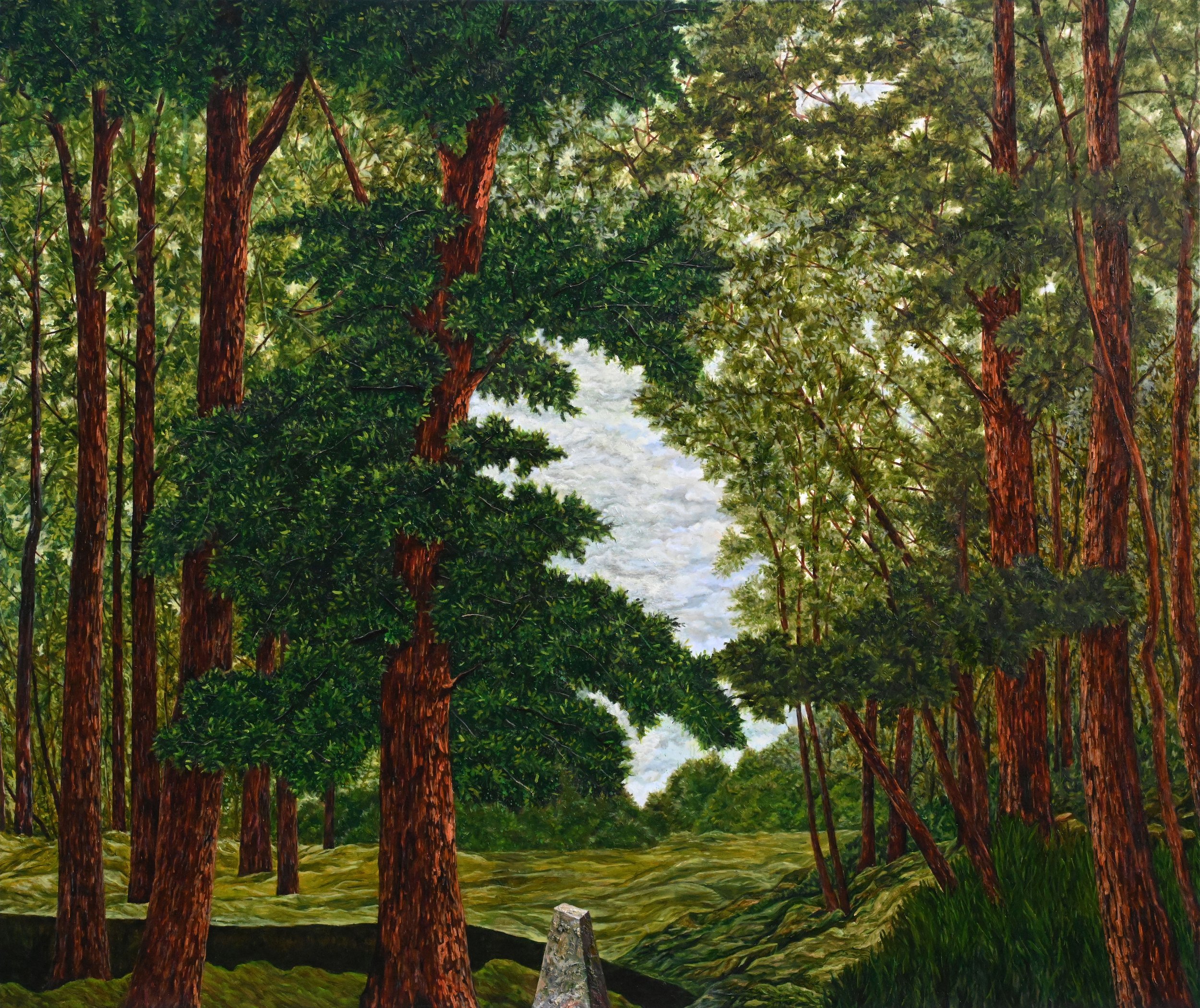
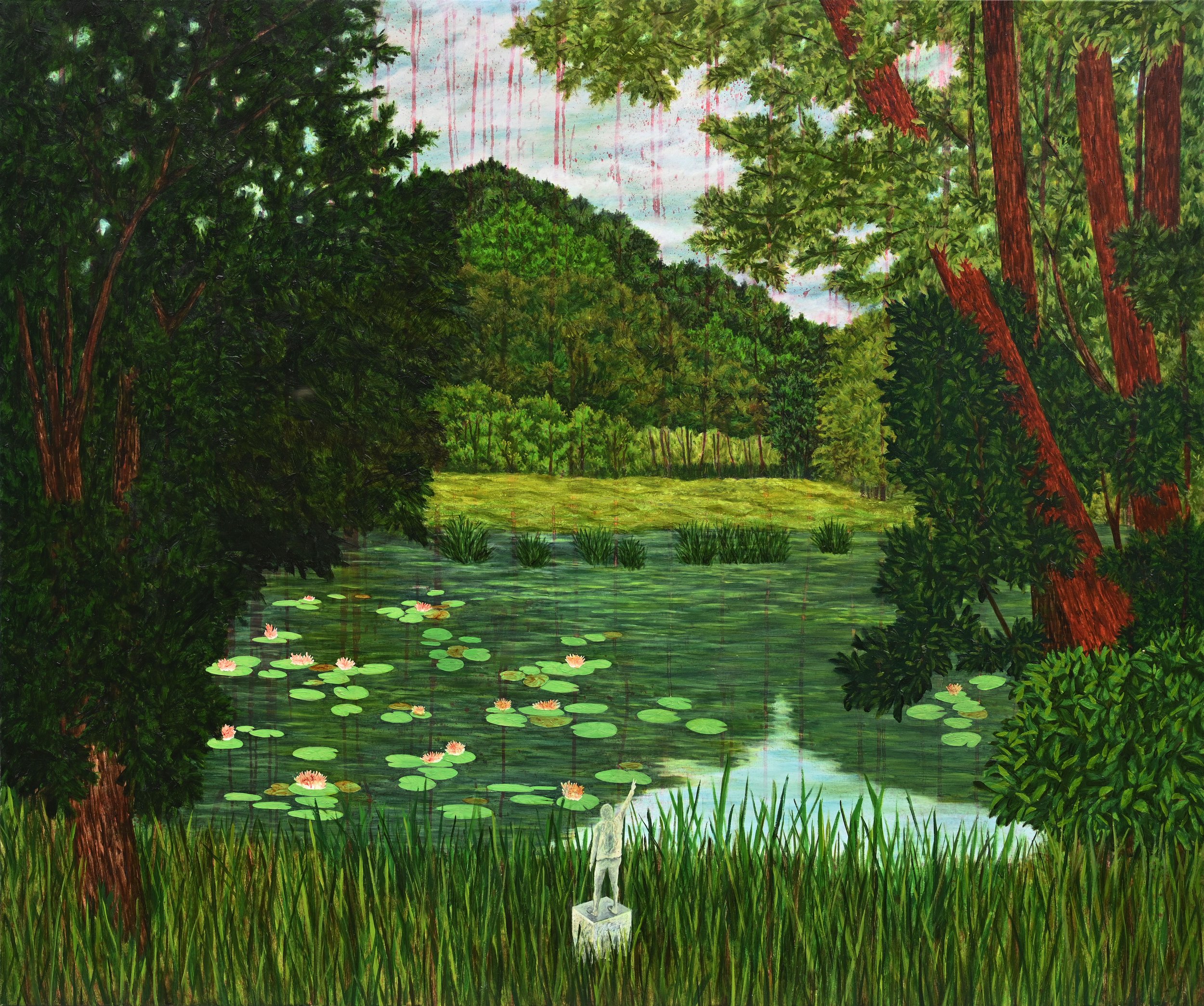
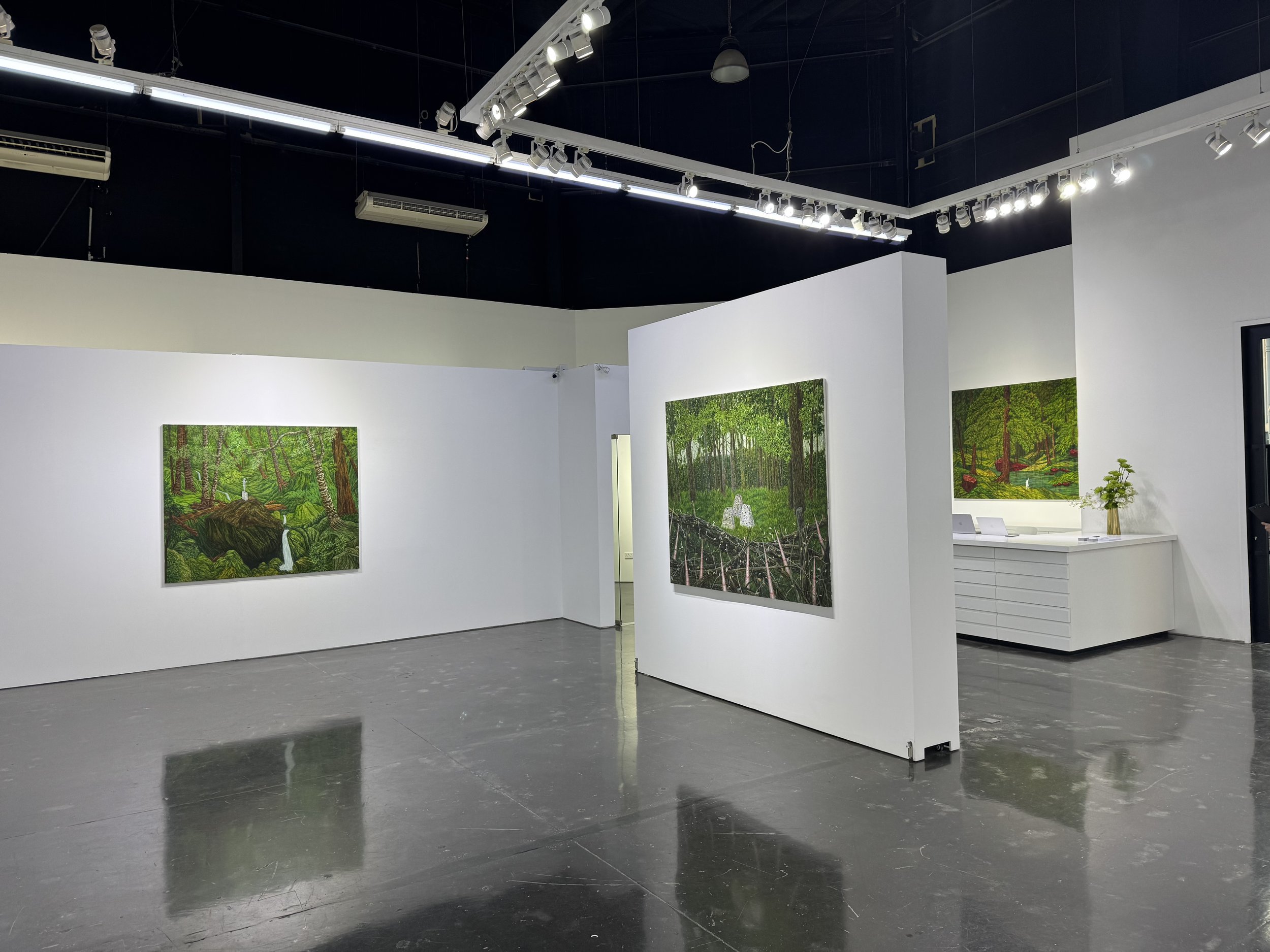
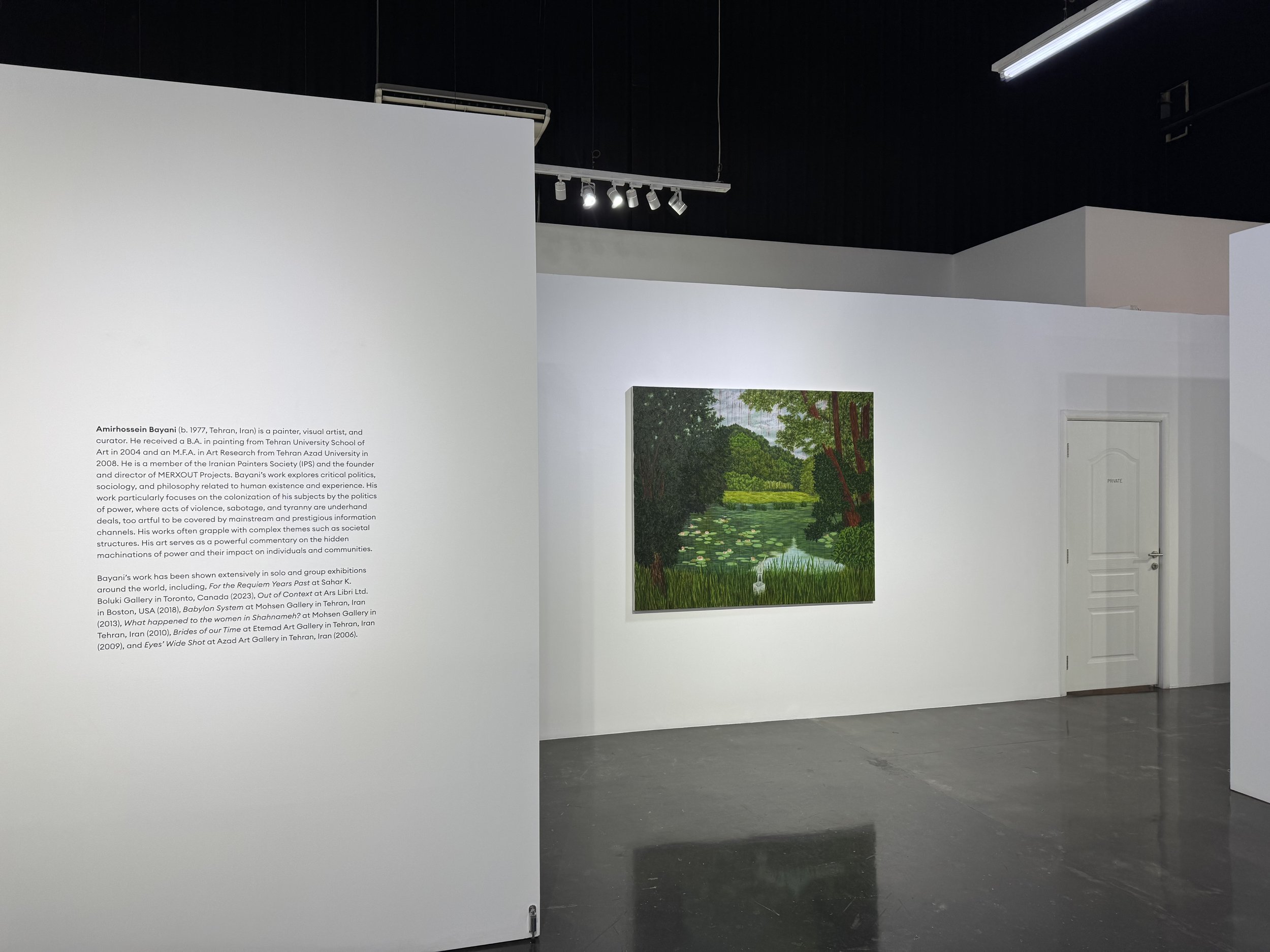
THE SEASON OF RUIN'S REMEMBRANCE
Written by: Millie Walton
Canoes floating past abandoned settlements, archways half submerged within the
sea, miniature figures lost within dense forests.
Iranian artist Amirhossein
Bayani’s vividly colored and highly detailed paintings explore themes around
immigration, protest and freedom with a particular focus on the struggles of
women. Working in the tradition of landscape painting, his latest series The Season
of Ruin’s Remembrance (Testimony of Eyewitnesses of the Truth) and Requiem for
the Years Past employ natural elements both as a way of expressing complex
emotional states and envisioning a more harmonious future.
Each of the paintings in the series The Season of Ruin’s Remembrance (Testimony
of Eyewitnesses of the Truth) was inspired by a real-life story of an Iranian woman
who fought for freedom and lost her life. Rather than illustrating their heroic and
tragic tales, however, Bayani envisions these figures in other-worldly forest
settings: they appear memorialized as statues or else as tiny, translucent spirits,
glimpsed between the trees, standing on a rock or on the edge of a lake. At a first
glance, these landscapes may seem to be paradisal, bursting with color and life,
but there is also an eeriness to the scenes: the shades of green are vivid to the point
of being luminous, the foliage so dense it creates a kind of wall, blocking out the
light. In two of the paintings, watery drips of red paint run down the canvas,
symbolic of the blood shed not just in Iran but in conflicts across the globe. ‘This
tension between beauty and horror, for me, describes the struggle for
emancipation,’ says Bayani. ‘It all depends on your perspective.’
The same bloody marks appear in the series Requiem for the Years Past, once
again complicating the beauty of the natural landscapes and staining the walls of
the buildings that sit on the banks of the river. These paintings are dedicated to
Mohammad Moradi, an Iranian man who drowned himself in the Rhone river to
raise awareness around the continued oppression of Iranian women, and his wife
who he left behind but also to all those who have been forced to flee their homes
due to war or economic, social or political hardships. In the compositions, we
encounter women in canoes floating to their freedom, but they are alone and as the
blood stains and falling black roses in Canoe #4 suggest, unable to shake the
memories of their home or the struggles they have experienced. And yet, these are
also scenes filled with hope. In Canoe #3 and Canoe #5 blooming patches of pink
roses appear as symbols of femininity and growth while two untitled paintings
depicting archways standing in water evoke the idea of new beginnings.
As Bayani notes, ‘As an artist from the Middle East, the concept of liberation often
seems distant and unattainable. Yet, when I look at nature, I am able to imagine a
future in which there is peace.’
London- Winter 2024